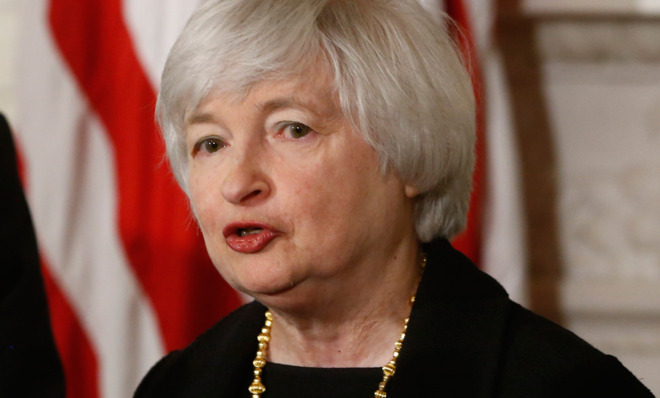The U.S. economy grew quickly at the end of 2013 — but is it sustainable?
The Commerce Department announced strong GDP numbers for the fourth quarter last year, but the market remains unsettled

American gross domestic product, the broadest measure of economic activity, grew at a seasonally adjusted annual rate of 3.2 percent in the fourth quarter, the Commerce Department said Thursday, in line with economists' estimates.
Overall, activity expanded 3.7 percent in the second half of 2013, significantly higher than the 1.8 percent pace in the first half of the year, and the strongest second-half growth since 2003, when activity expanded 5.8 percent.
The data shows that growth came mostly from rises in consumption, which rose 2.4 percent on Q3, and foreign trade, which rose 1.4 percent. Growth in companies' inventories and investment were markedly lower. Government spending fell by one percent.
The Week
Escape your echo chamber. Get the facts behind the news, plus analysis from multiple perspectives.

Sign up for The Week's Free Newsletters
From our morning news briefing to a weekly Good News Newsletter, get the best of The Week delivered directly to your inbox.
From our morning news briefing to a weekly Good News Newsletter, get the best of The Week delivered directly to your inbox.
This level of growth should come as a surprise to no one. Markets have so far responded well to the Federal Reserve's quantitative easing bond buying program, with both the Dow Jones Industrial Average and S&P 500 hitting nominal all-time highs in recent months. Unemployment is down to 6.7 percent, the lowest since the 2008 financial crisis. Even housing prices are beginning to rise again. And there has been no inflationary cost; inflation remains contained below the Fed's two percent inflation target.
The question is whether that growth can last now that the Federal Reserve is tapering its bond buying programs.
The central bank will purchase $65 billion each month in bonds and mortgage-backed securities, down from $85 billion in 2013, which on the surface appears to be a cautious and tentative approach. But markets around the world seem unsettled by that prospect.
The Fed forecasts the economy will grow between 2.8 percent and 3.2 percent in 2014. Whether or not growth can reach that level in the context of a winding down of quantitative easing remains to be seen.
A free daily email with the biggest news stories of the day – and the best features from TheWeek.com
The Fed, at least, seemed optimistic yesterday, when it laid out its view that a taper was justified due to "growing underlying strength in the broader economy."
Critics of monetary stimulus assert that the Fed's stimulus programs may juice the economy while they last, but tend to lead to a downturn once the program is completed. Of course, this does not have to be the case, but it is quite possible that the market will get itself into a panic.
This means that the Fed should be prepared to continue stimulus if the recovery does not yet prove to be self-sustaining.
John Aziz is the economics and business correspondent at TheWeek.com. He is also an associate editor at Pieria.co.uk. Previously his work has appeared on Business Insider, Zero Hedge, and Noahpinion.
-
 Why Greenland’s natural resources are nearly impossible to mine
Why Greenland’s natural resources are nearly impossible to mineThe Explainer The country’s natural landscape makes the task extremely difficult
-
 The Week contest: Post-surgery Spanish
The Week contest: Post-surgery SpanishPuzzles and Quizzes
-
 Political cartoons for January 14
Political cartoons for January 14Cartoons Wednesday’s political cartoons include Jerome Powell's rap sheet, holiday bill blues, and more